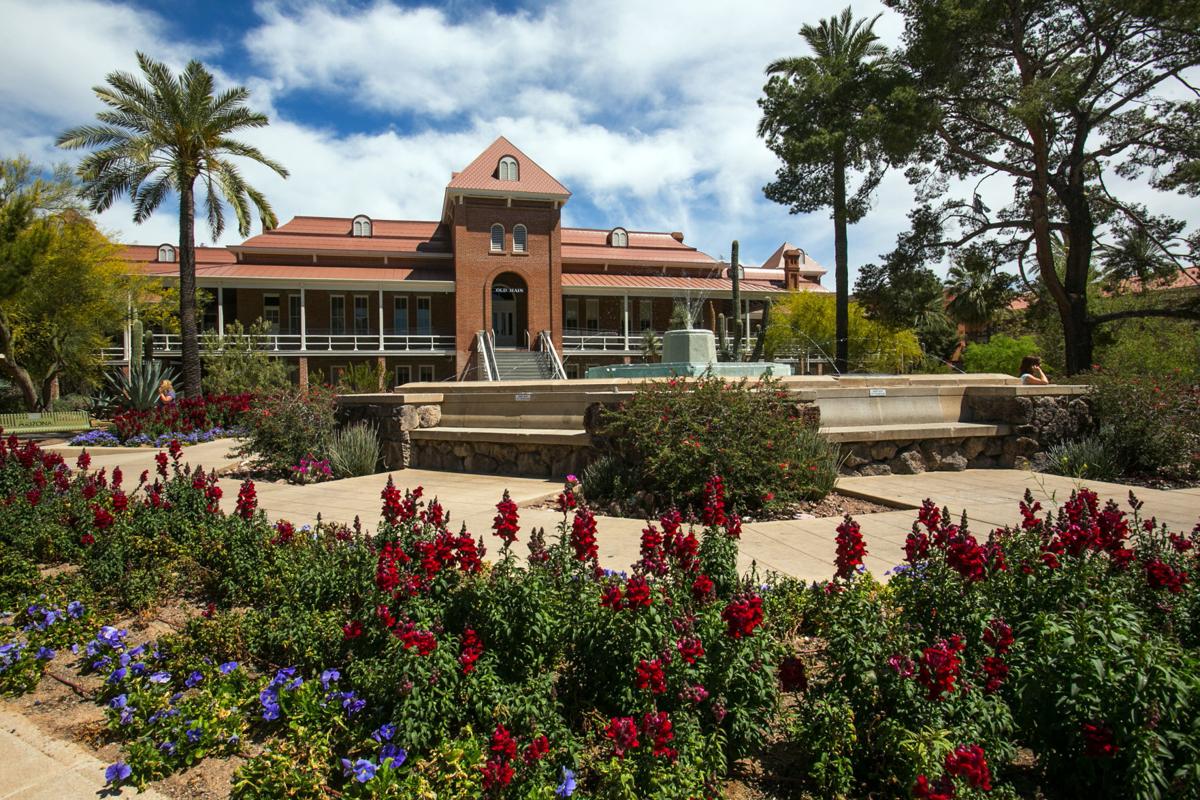Current and future undergraduate students who are members of one of Arizona’s 22 federally recognized Native American tribes won’t have to pay tuition or mandatory fees to attend the state’s flagship university.
On Monday, the University of Arizona announced the creation of the Arizona Native Scholars Grant Program. It launches this fall and is open to eligible full-time, degree-seeking undergraduate students.
According to Kasey Urquidez, vice president of enrollment management and dean of undergraduate admissions at the UA, it’s been a long time coming.
“For many years, we’ve been trying to figure out how we can do this,” said Urquídez, who added that after working with the provost’s office to assess feasibility, the UA was able to move forward with the program this summer. “As (Arizona’s) Land Grant institution, it’s important to be able to offer this to our Native Students.”
Like many public colleges and universities, the University of Arizona — which was founded in 1885 at the height of the federal government’s violent takeover of tribal lands in the West — sits on Indigenous land. In 2021, the UA crafted a statement in consultation with the Tucson-area Pascua Yaqui Tribe and Tohono O’odham Nation, acknowledging that fact.
But the new grant program aimed at making college more affordable for Arizona’s Native students goes beyond words, and puts substance behind the UA’s spoken commitment to equity.
“We recognize and acknowledge the history that there is. We want to make sure that because of that we’re really providing that access and support for our Native students to become an Arizona Wildcat,” Urquídez said. “Finances are a hard thing to deal with when going to college. By eliminating a little bit of that barrier — education costs can include more than tuition and fees — we’ll be able to help serve our Native students in a much broader way.”
While the UA is the first school in Arizona to unroll a grant program aimed at significantly reducing the financial barriers for Native students who want to pursue higher education, it’s not the first in the country. The University of California System announced a similar program for Native students in its state in April, and in Oregon, the state has allocated funding to cover the majority of costs for in-state tribal students for at least the 2022-23 school year.
Nationwide, Indigenous populations have historically experienced lower college enrollment and completion rates than peer demographics.
Seventeen percent of Native students attended college after high school, compared to 60% of the total U.S. population, according to a 2019 report from the Postsecondary National Policy Institute. Of those Native students who did attend college, 41% graduated within six years compared to 63% of white students.
Efforts like the UA’s grant program is one potential solution to help alleviate the financial obstacles partially driving those gaps.
During the 2021 school year, 3.2% of the 38,528 total undergraduates enrolled at the UA identified as American Indian or Alaska Native; About 400 UA students would have been eligible for the grant program based on last year’s student demographics, according to a UA news release.
Funded through a reallocation of financial aid money, the UA’s program will provide up to $13,200 in value — that’s the cost of one year of tuition and fees for in-state students — to each eligible student. If students receive a federal Pell Grant or other scholarships to help pay for tuition, the grant program would cover the remaining balance.
“Our Yaqui students and families will benefit greatly, especially given the rising cost of rent, tuition, food, and gas,” Peter Yucupicio, chairman of the Pascua Yaqui Tribe, said in the email about the program. “This will enable us to ensure more tribal members have a shot at higher education.”
The program is to be funded indefinitely, according to the UA.
Native students who want to receive the grant must establish their eligibility by submitting an application for federal financial aid and provide tribal identification. For now, the grant is only available to full-time undergraduate, degree-seeking students attending the UA’s main campus in Tucson, though it has potential for expansion.
“We wanted to focus on our main campus students where we have all of the support in place, and we’ll do a review to see if we could support more students — graduate students, distance learners and Arizona Online students — in the future,”
Despite its current limits, the announcement of this benefit, Urquídez added, may also allow some part-time students to become full-time, and therefore eligible in the fall.
“We knew we didn’t want to wait until we had every single thing in place for every student,” she said. “We just wanted to get started with what we knew we could do for our main campus, full-time students which is our largest population.”
The new grant program is one of several initiatives the UA has launched in an effort to support Arizona’s indigenous students and their communities. Others include the Indigenous Peoples Law and Policy Program, the Indigenous Resilience Center and the Indigenous Teacher Education Program.
“These initiatives aren’t checkmarks; they represent the University of Arizona’s commitment and continued drive to be the leading institution serving Native Americans,” Levi Esquerra, the UA’s senior vice president for Native American advancement and tribal engagement, said. “This is a very exciting time, and we’re going to continue our work with tribes to make great things happen.”





